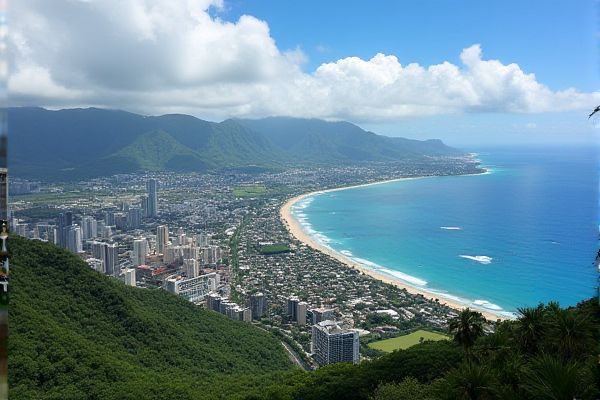
Weather and climate in Hawaii: Tropical climate year-round. Rainy season November to March. Trade winds provide cooling. Microclimates vary by location. Humidity is generally high. Hurricane season June to November. Temperature averages 75degF to 85degF. Coastal areas are warmer. Mountain areas are cooler. Sunshine prevalent throughout the year.
Tropical climate year-round.
Hawaii has a mild tropical climate, characterized by near-constant trade winds, minimal seasonal temperature variations, and high humidity, making it one of the most comfortable and stable climates globally. For more detailed information about Hawaii's climate, you can visit the Encyclopaedia Britannica website.
Rainy season November to March.
Hawaii's rainy season occurs from November to March, characterized by cooler temperatures, refreshing breezes, and increased rainfall, particularly on the windward sides of the islands. During this period, resort areas on the southern sides tend to be drier and sunnier, offering a contrast to the lush, rain-soaked landscapes found elsewhere. For those looking to embrace the local experience amidst the rain, the Hawaii Aloha Travel Blog offers insights into enjoying Hawaii's natural beauty even during the wetter months, proving that a little rain shouldn't deter the spirit of aloha.
Trade winds provide cooling.
Trade winds in Hawaii provide significant cooling by blowing from the northeast, bringing cool, moist air that wraps around the islands, creating clouds, rain, and a refreshing breeze. These winds are especially prevalent in the summer to counteract rising temperatures. Discover more about this phenomenon on the Flux Hawaii website.
Microclimates vary by location.
The Big Island of Hawaii features 10 distinct climate zones, including tropical rainforests, arid deserts, and polar tundra at the summits of Mauna Kea and Mauna Loa, showcasing dramatic microclimate variations across the island due to differences in elevation and location. To learn more about the unique and diverse climate of this breathtaking island, visit the Hawaii Climate page for detailed information and insights.
Humidity is generally high.
Humidity in Hawaii is generally high, ranging from 70-81% on average, with morning and afternoon levels varying slightly by month. For detailed monthly data, you can refer to the Humidity Levels in Hawaii. Despite these variations, the state remains consistently humid throughout the year.
Hurricane season June to November.
Hawaii's official hurricane season runs from June 1st to November 30th, with August being the peak month, although severe weather events are relatively rare in the region. While tropical cyclones can occur off-season, the specified period is when the islands are most susceptible to tropical storms and hurricanes. For more detailed information, you can refer to the Visitor's Guide to Hurricane Season in Hawaii, which provides valuable insights on how to stay prepared and safe during this time.
Temperature averages 75°F to 85°F.
In Hawaii, temperature averages range from 75°F to 85°F, with summer highs around 85°F (29°C) and winter highs around 78°F (25°C), while nighttime temperatures typically range from 71°F to 62°F depending on the season and island. For a detailed overview of Hawaii Weather, you can visit the Hawaii Guide website to learn more about the climate variations across different islands and times of the year.
Coastal areas are warmer.
Coastal areas in Hawaii are characterized by warm and consistent temperatures, with average daytime summer temperatures at sea level reaching 85°F (29.4°C) and winter temperatures at 78°F (25.6°C). This is primarily due to the moderating effect of the warm sea surface temperatures. For more detailed information, you can visit the Hawaii Visitors and Convention Bureau website.
Mountain areas are cooler.
Mountain areas in Hawaii are significantly cooler due to the decrease in temperature with elevation, approximately 3 degrees per thousand feet, resulting in climates ranging from tropical to sub-Arctic, with snow and frost common on the highest peaks like Mauna Kea and Mauna Loa during winter months.
Sunshine prevalent throughout the year.
Hawaii experiences abundant sunshine throughout the year, with cities like Honolulu, Oahu, and Kahului, Maui, averaging over 270 sunny days annually, and even the cloudier areas like Hilo still seeing around 168 sunny days per year.
